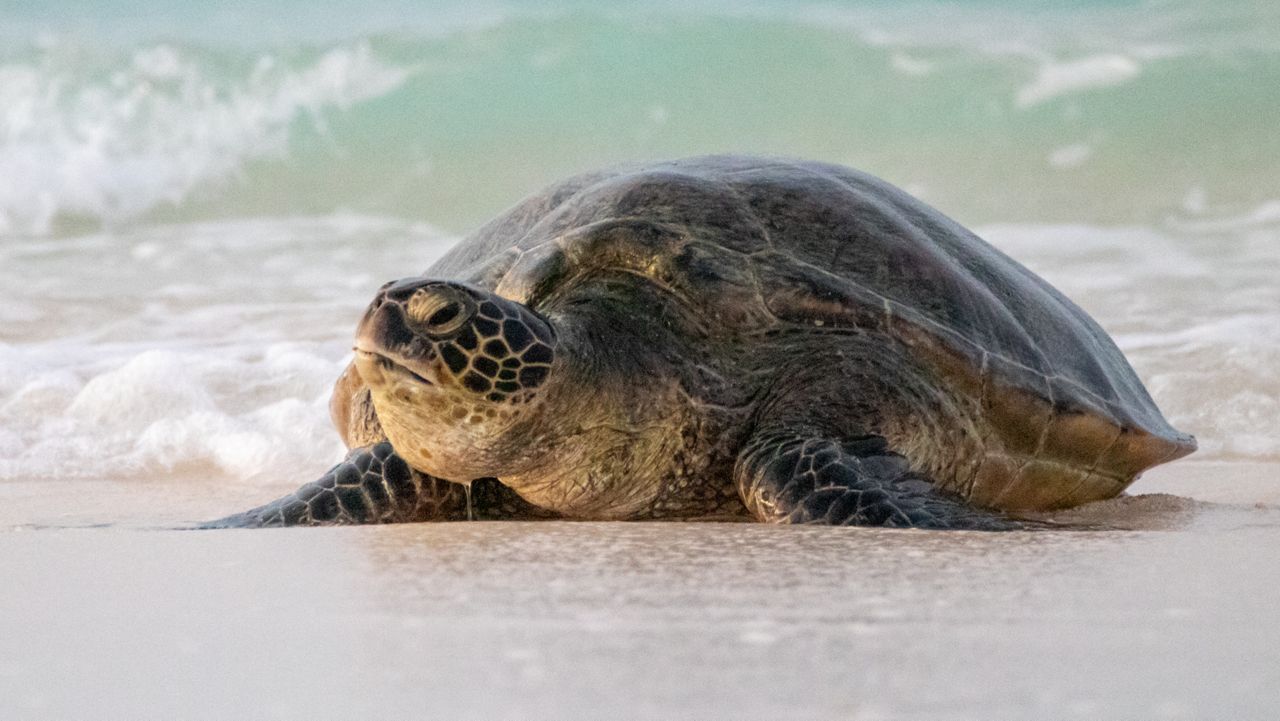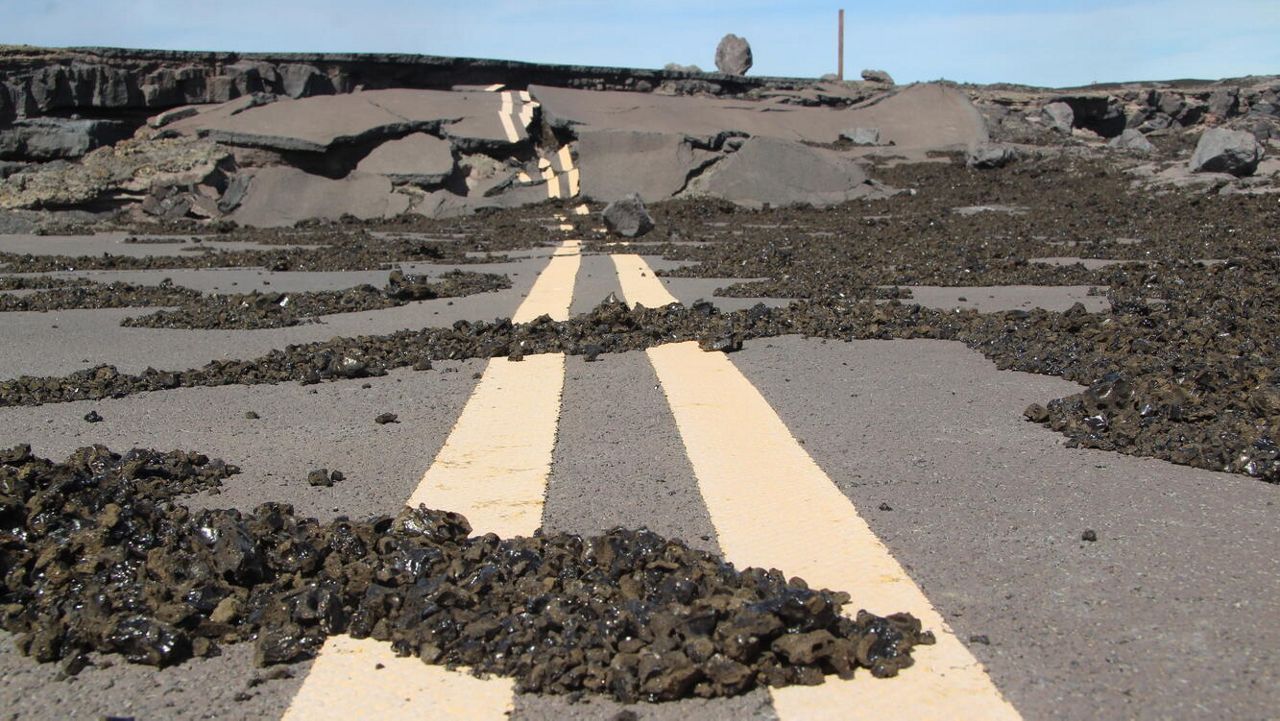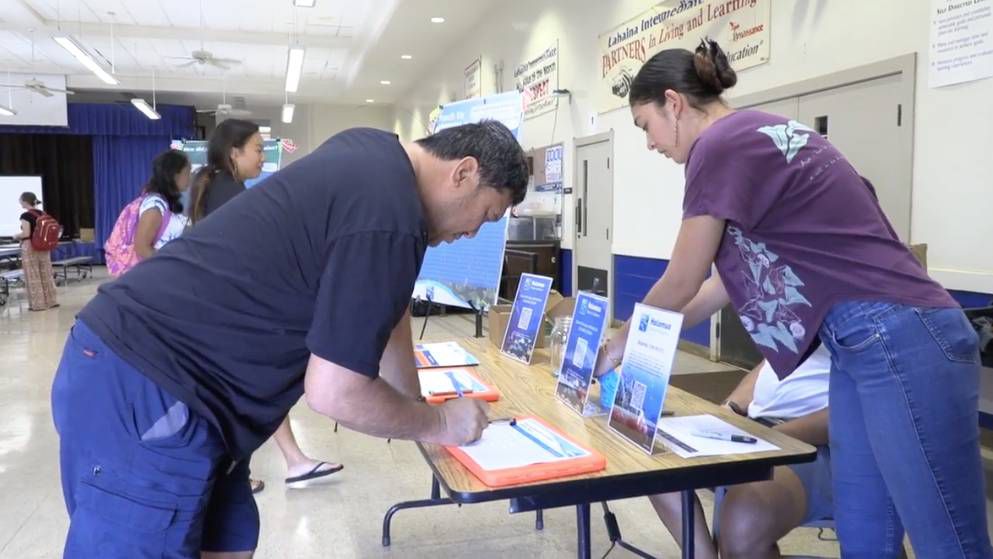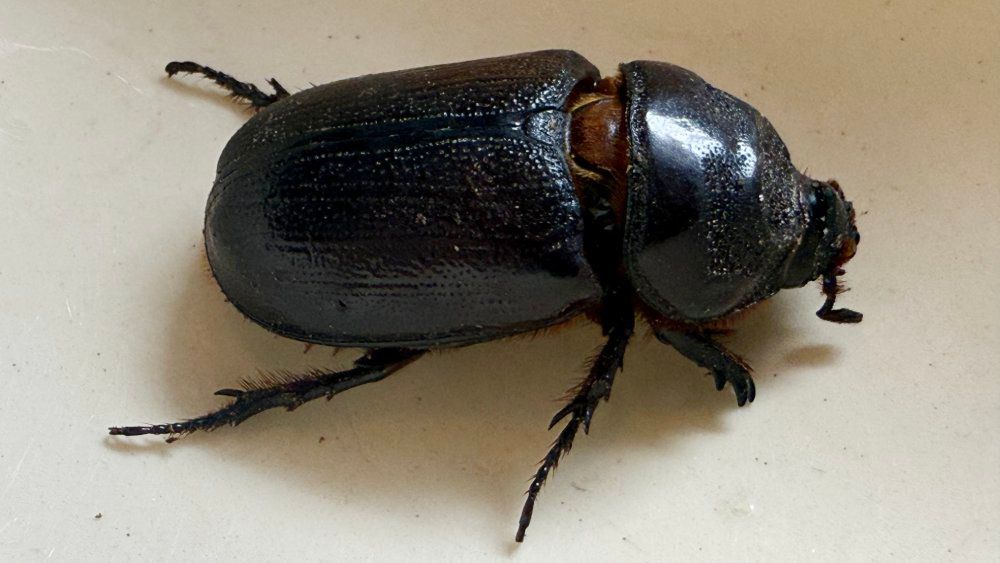Sea turtle nesting season starts in mid-April and continues until September, and occasionally it can extend until December, according to the U.S. Fish and Wildlife Services.
Three types of turtles come to Hawaii’s beaches to nest: honu (green sea turtles), honuʻea (hawksbill sea turtles), and olive ridley turtles.
Conservation officials ask people who see signs of a nesting sea turtle to report their findings to the NOAA Fisheries Marine Wildlife Hotline at 1-888-256-9840.
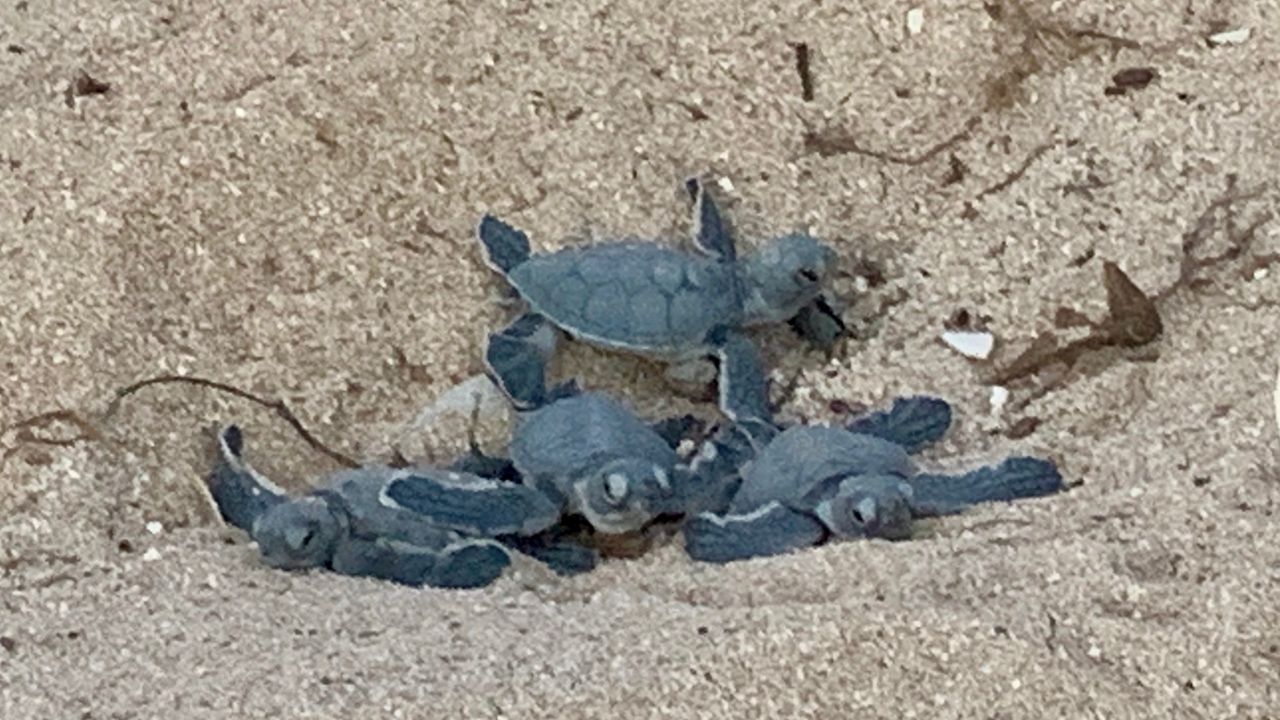
People should look out for large “pits” in the sand (which may indicate a nest) or any baby turtles. Sea turtles lay their nest at night near coastal vegetation and well above the high-tide line. Often, sea turtles who are nesting will be seen digging with their rear flippers and then they will leave the beach.
The public is asked to stay 10 feet away from sea turtles and their nests, and to avoid shining bright lights, including flash photography, cellphone screen lights and vehicle lights, near sea turtles or on beaches after dusk.
“Two of the most important things we can do for sea turtles is give them space when they are on land and keep lights from being seen from the beach,” said Joy Browning, Pacific Islands Fish and Wildlife biologist, in a news release. “Most activity associated with nesting occurs at night. Lights that can be seen from the beach can cause hatchlings that just emerged from the nest to become disoriented. A disoriented turtle may wander inland or become trapped, unable to locate the ocean.”
Honu nest on beaches across the state, but many of them nest on Lalo (French Frigate Shoals) in the Papahanaumokuakea Marine National Monument. Honuʻea nest on Hawaii Island, Maui and Molokai. Olive ridley nests are rare in Hawaii, but have been found on Hawaii Island, Maui and Oahu.
Michelle Broder Van Dyke covers the Hawaiian Islands for Spectrum News Hawaii. Email her at michelle.brodervandyke@charter.com.





